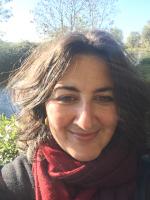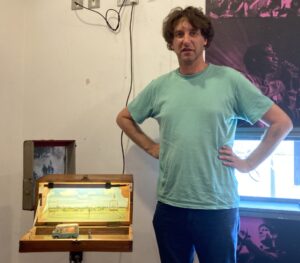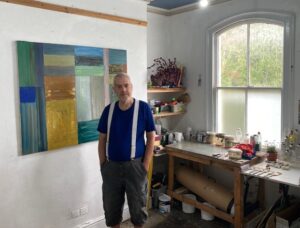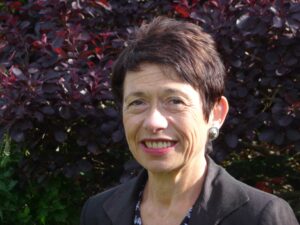Cambridge Arts Round Up Episode 51 September 2022
In this edition of Cambridge Arts Round Up Simon Bertin visits poet Mina Gorji who talks on her work and her new anthology ‘Scale’ published this month; Kinaesthetic artist Chris Dobrowolski talks on his often large scale installations and on having imposter syndrome that often sparks creative ideas; Cambridge University Scientific Historian and award winning author Patricia Fara tell us about women’s suffrage in the first world war and how women at Cambridge played a key part in changing the course of history; and Painter Peter Hawksby talks on Abstract art and what goes into one of his creations.

Associate professor of English at Pembroke college Mina Gorji.
At the volcano’s edge, in exilic space, at the bottom of the Arctic Sea, or in the acid clouds of Venus, Mina Gorji’s Scale traces life at its limits. The poems range across scales of distance, temperature and time, from vast to minute, glacial to volcanic, Pleistocene to present day, constellation to millipede. Adapting to the cold of a new continent opens a chromatic investigation of feeling. Shifting between scales, from insect to ancient star, Scale explores the forms, conditions and frequencies of survival.
Scale builds on the considerable achievement of Gorji’s first book, Art of Escape (2019). When it was selected for the Telegraph Poetry Book of the Month, Tristram Fane Saunders wrote about the ‘incisive clarity’ of Gorji’s work, calling one poem ‘perfection in miniature’.
Gorji’s poems feed into current ecological concerns, but in no conventional or clichéd way. Marina Warner described her poems as ‘building a place of safety – for herself, her family, her readers, and all those who are wandering and uprooted; her poetic methods take their cue from the many marvellous creatures she evokes and the multiple protective measures they adopt – nests, camouflage, mimicry, display. Above all, language can help create shelter.’


